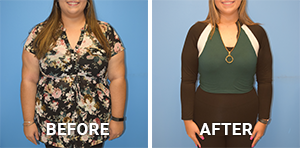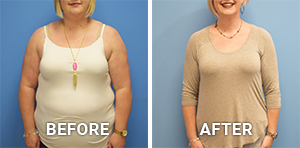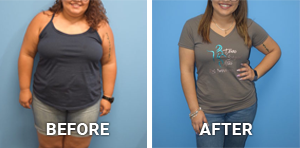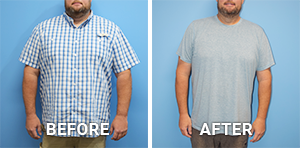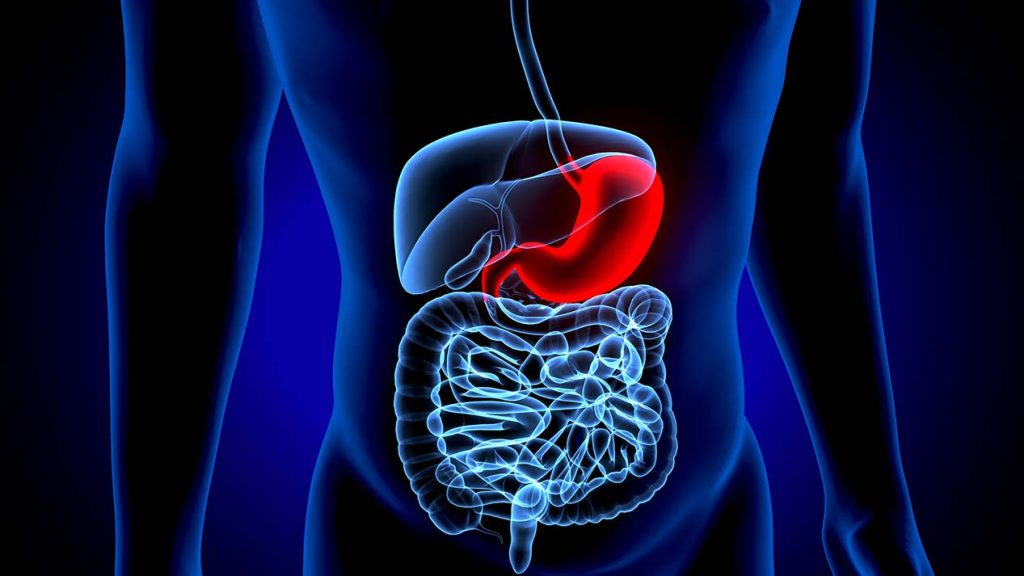Gastric re-sleeve or re-calibration is a surgical procedure that revises the previously sleeved stomach created during a previous gastric sleeve surgery. Although gastric sleeve surgery, or sleeve gastrectomy, is a popular and effective form of weight loss surgery, patients may begin to experience weight regain, acid reflux or even dysphagia. As the stomach dilates, patients may find difficulty maintaining portion control and begin to regain lost weight. If you’ve noticed setbacks or stalled progress in your weight loss journey after a sleeve gastrectomy, you may be an eligible candidate for a gastric re-sleeve. Schedule an appointment with Dr. Ricardo Bonnor M.D., FACS, FASMBS to explore your options and get back on track.
Contents
Reasons to Re-Sleeve
When you and your surgeon decided on choosing a gastric sleeve surgery to aid in your weight loss, you made a well-informed and carefully considered choice. Sleeve gastrectomy is the most popular bariatric surgery today, and with good reason. This procedure has excellent rates in treating hypertension, sleep apnea, and diabetes with low rates of complications. (1)
If you’ve noticed that the numbers on your scale are starting to move in the wrong direction after a gastric sleeve surgery, it may be time to take further action. Having already navigated your first surgery and recovery, it can be discouraging to think that you may require a revision surgery. Luckily, you have options when it comes to continuing your success. A re-sleeve or re-calibration of your gastric sleeve can address weight gain caused by an ineffective gastric sleeve.(2)
About Sleeve Surgery
During your initial surgery, your stomach was reduced by up to 70 to 80%. However, many factors can lead to the stomach’s expansion and ultimate failure of the sleeve after this procedure.
- Changes in eating behavior, leading to dilation of the remaining stomach and loss of restriction
- Technical component, including incomplete removal of the gastric fundus (3)
During gastric sleeve surgery, the outer portion of the stomach is removed, leaving a narrow “sleeved” shaped stomach instead. With reduced volume, patients are able to eat far less than previously experienced. Removing this surface area of the stomach also reduces the amount of ghrelin produced. This “hunger hormone” also plays a crucial role in appetite, how food is moved through the body, and how energy is utilized.
Gastric fundus not completely removed during the original gastric sleeve procedure may lead to ineffective restriction. As a result, they are still able to consume greater portions and calories that will lead to weight gain, an increased stomach capacity, and ultimate failure of the bariatric procedure. In other cases, patients develop other gastrointestinal symptoms due to issues from their initial surgery. This can include acid reflux, trouble swallowing, and regurgitation.
Benefits of Robotic Gastric Re-Sleeve or Re-calibration
Dr. Bonnor typically can perform a re-sleeve using a robotic assisted technique, which allows for greater precision and in some studies reported lower rates of complications. Because the robotic technology allows surgeons to perform with greater accuracy and delicacy, the body is subjected to less trauma. Only four small ports of entry are needed to access the stomach, so recovery time is greatly reduced. Occasionally, these can be placed in the same locations used in the original surgery to prevent any additional scarring. (4)
In addition, Dr. Bonnor infiltrates the abdominal wall with a tumescent solution of Exparel, a non-opioid analgesic that ensures that patients remain comfortable for up to 72 hours after their procedure is complete.
Candidates
Up to 30% of patients require a re-sleeve after undergoing gastric sleeve surgery. (5)
Indications for a Re-Sleeve
- Inadequate weight loss
- Increase in portions leading to weight regain or poor weight loss
- Development of severe upper gastrointestinal symptoms such as acid reflux (3)
- Hiatal hernia post gastric sleeve surgery.
Personal Consultation
If available at the time of consultation, he will review the operative note from your initial gastric sleeve procedure well as discuss your current options for revision. He will also order testing to identify the reason for the failure of the gastric sleeve. This may include but not limited to: a barium swallow, upper endoscopy, or CT scans so that Dr. Bonnor can assess the condition of the existing sleeve, and determine the best approach for the revision.
Procedure
Robotic gastric re-sleeve is performed under general anesthesia. After the ports are established for the robotic arms, Dr. Bonnor will be able to view the abdominal cavity and perform surgery by manipulating computer-assisted controls externally. Once he has sufficient access to the enlarged stomach, he will create a new “seam” using specialized medical staples to narrow the width of the existing sleeve, ensuring that the stomach is more effectively limited.
After Your Gastric Re-Sleeve
After a re-sleeve, patients will spend the night in the hospital. They will be able to return home the following day. Recovery from a re-sleeve procedure is similar to that of an initial gastric sleeve surgery. Patients will move from a clear liquid diet to soft foods and will be able to eat a soft diet within 3 to 4 weeks–in smaller portions that the sleeved stomach can digest. They will also be able to resume exercise at this time. To learn more about your options for weight loss success after a gastric sleeve, request an appointment online or by calling (281) 579-5638.
Frequently Asked Questions (FAQ)
How do I know if a gastric re-sleeve is right for me?
If you’re experiencing gastric symptoms or weight gain after a sleeve gastrectomy, you may be a candidate for revision surgery or gastric re-sleeve. Testing will be required to diagnose the cause of the sleeve failure, and to ensure that you are a good candidate for a revision surgery.
What kind of anesthesia is used during a robotic re-sleeve?
Robotic gastric re-sleeve is performed under general anesthesia. Patients spend the night in the hospital and typically return home the next afternoon.
References
- Benaiges, D. (2015). Laparoscopic sleeve gastrectomy: More than a restrictive bariatric surgery procedure? World Journal of Gastroenterology, 21(41), 11804. https://doi.org/10.3748/wjg.v21.i41.11804
- Filip, S., Hutopila, I., & Copaescu, C. (2019). Re-sleeve Gastrectomy – An Efficient Revisional Bariatric Procedure – 3 Years Results. Chirurgia, 114(6), 809. https://doi.org/10.21614/chirurgia.114.6.809
- Saliba, C., El Rayes, J., Diab, S., Nicolas, G., & Wakim, R. (2018). Weight Regain After Sleeve Gastrectomy: A Look at the Benefits of Re-sleeve. Cureus. https://doi.org/10.7759/cureus.3450
- Rebibo, L., Fuks, D., Verhaeghe, P. et al. Repeat Sleeve Gastrectomy Compared with Primary Sleeve Gastrectomy: A Single-Center, Matched Case Study. OBES SURG 22, 1909–1915 (2012). https://doi.org/10.1007/s11695-012-0779-9
- Silecchia, G., De Angelis, F., Rizzello, M., Albanese, A., Longo, F., & Foletto, M. (2015). Residual fundus or neofundus after laparoscopic sleeve gastrectomy: is fundectomy safe and effective as revision surgery? Surgical Endoscopy, 29(10), 2899–2903. https://doi.org/10.1007/s00464-014-4017-5


